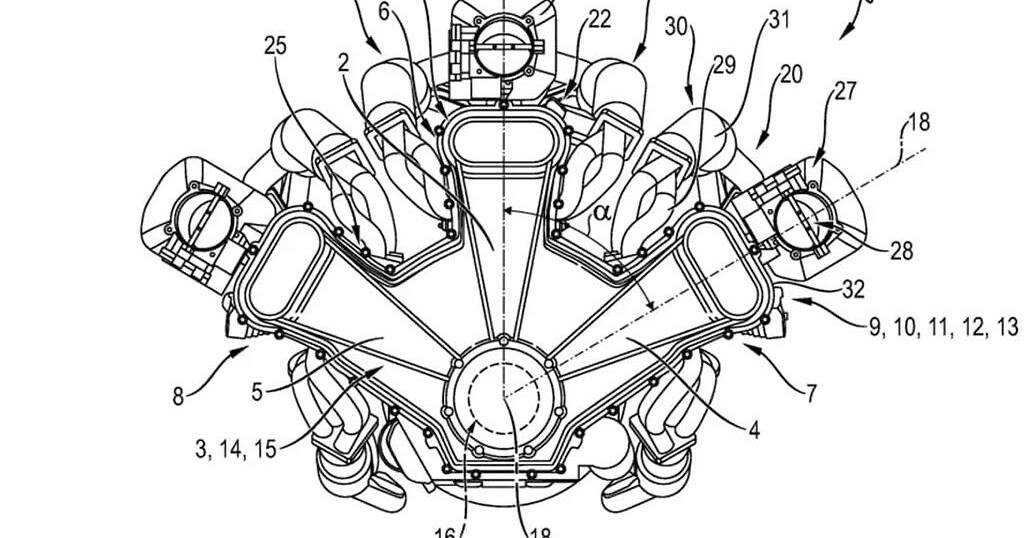
Porsche has filed a patent for a W18 petrol engine, a groundbreaking development that could signal its ambitions to challenge the likes of the Bugatti Chiron. The patent, initially lodged in April 2024 and recently uncovered by Motor1, details a “space optimized” internal combustion engine that could be adapted for various high-performance models, potentially including a new hypercar.
The patent filing reveals intricate designs for the new engine, which Porsche suggests could be configured in nine-, 15-, or 18-cylinder layouts. This flexibility allows the engine to be tailored according to specific vehicle needs and performance goals. However, Porsche has yet to officially comment on the filing, and industry experts note that patent applications do not always lead to production, as automakers often secure patents to protect innovative concepts from competitors.
Innovative Engine Design
At the heart of the W18 engine design are three inline six-cylinder blocks sharing a common crankshaft. This modular approach means the engine can be reconfigured to include three (W9), five (W15), or six cylinders (W18) in each bank. Each cylinder block is designed to be compact, minimizing the overall space required for installation.
Porsche’s patent also highlights the engine’s efficient cooling system, where hot exhaust gases are directed below and between the cylinders, separated from the cooler air intake above. This design not only enhances performance but also facilitates turbocharging. A potential triple-turbo W18 engine would occupy a space similar to a conventional straight-six engine, making it suitable for smaller vehicles compared to traditional V-engine designs.
Historical Context and Comparisons
The W18 engine concept is reminiscent of the engineering prowess seen in the Bugatti Chiron, which features an 8.0-litre quad-turbo W16 engine. Designed by the legendary engineer Karl Piech, the Chiron’s engine generates 1177kW of power and 1600Nm of torque, propelling the Chiron Super Sport 300+ to a top speed of 490.48 km/h, making it the world’s fastest production car at the time.
Meanwhile, the Volkswagen Group, Porsche’s parent company, has a history of producing W engines, such as the 6.0-litre W12 engine introduced in 2001. This engine powered several models, including the Audi A8 and Bentley Continental GT, showcasing the versatility and performance potential of the W engine configuration.
Future Prospects and Industry Impact
Porsche’s pursuit of a W18 engine aligns with its strategic shift under new leadership. The company’s last street-legal hypercar, the 918 Spyder, was produced between 2013 and 2015, featuring a 4.6-litre V8-based plug-in hybrid system. The 918’s successor was hinted at through the all-electric Mission X concept in 2023. Whether the new W engine will power a future hypercar or remain a conceptual exercise is yet to be determined.
According to industry analysts, the development of a W18 engine could position Porsche at the forefront of hypercar innovation, potentially rivaling Bugatti’s engineering feats. However, the transition to hybrid and electric powertrains across the automotive industry raises questions about the long-term viability of such high-performance internal combustion engines.
“The W18 engine represents a bold step in engineering, showcasing Porsche’s commitment to pushing the boundaries of performance and design,” said an industry expert.
As Porsche navigates its future under new leadership, the automotive world will be watching closely to see if this patent translates into a tangible product that can redefine the hypercar landscape. For now, the W18 engine remains a testament to Porsche’s innovative spirit and its ongoing quest for automotive excellence.





